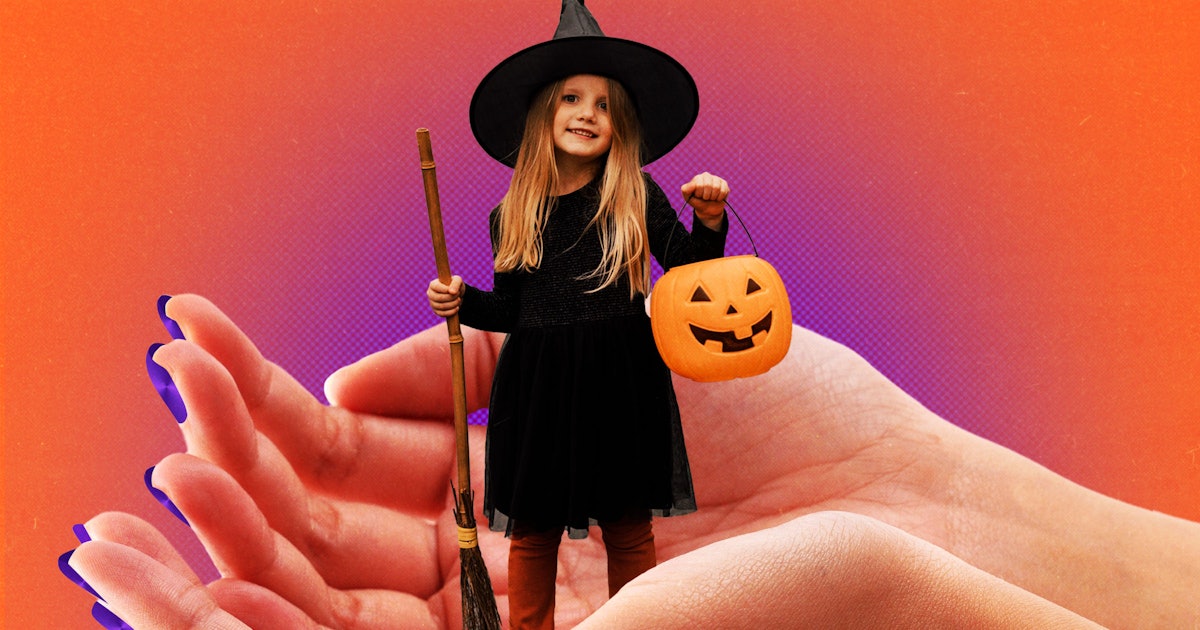Halloween is — by nature — about having a chaos-filled, candy-fueled night. And as it stands, it’s not terribly inclusive of those of us who are on the spectrum. As Halloween is (if you can believe it) fast approaching, it’s important to create a more neurodivergent-inclusive night. Before we get to the “how” of how to do that, it seems essential to address the “why?” when it comes to creating a neurodivergent-inclusive Halloween. As an autistic mother myself, I crave explanation and clarity. I want to know why I need to do something in order to make an emotional connection with the cause or request.
So let’s parse out why it’s important.
Twenty-five percent of the world population is neurodivergent and has an invisible disability. Think autism, ADHD, PTSD and acquired neurological diagnoses such as stroke, Parkinson’s and dementia, to name a few. In any given day, one in four humans interacted with are likely to be neurodivergent (ie.to have an invisible disability). Now think about all the humans typically interacted with on Halloween night–at least one in four Blueys is bound to be neurodivergent.
In any given Halloween scenario, it is a guarantee you will be interacting with someone with an invisible disability. As a mom who knows how important it is to create magical memories for your family and has been weighed down by the pinnings of Pinterest a time or two, I am requesting you take time to be intentional this Halloween and champion magical memories for all. Why? Because it is the kind and inclusive thing to do. Don’t be a jerk. Why? Because the mom of the autistic child or the dad of the teen with ADHD loves their child dearly, too. It’s not only about your child’s experience that frightful night. And why? Because it really doesn’t take that much work.
And now the “how”.
Eliminate expectations. From greeting and eye contact to even wearing a costume, throw out expectations. Halloween can be a night of sensory overload with the glowing lights, potential smoke machines, smells of apple cider and the crowds. Now imagine being neurodivergent and having these senses be amplified and having a brain that is processing so much information simultaneously that it is almost miraculous to even be able to approach something like Halloween night. And costumes? Some will don themselves head-to-toe in the most epic of costumes and some will wear everyday clothes. Some will be tiny toddlers and some will be towering, older adults. Neurodivergence knows no singular age nor stature.
When the brain has a lot of processing happening within, this might result in communication differences. While you might say, “Happy Halloween! How are you doing tonight?” others might respond by responding with the exact phrase you said, or might, for instance, use Lightning McQueen’s famous “ka-chow!” as a response. The key is to let them communicate in their own way and to look for ways to connect with them to validate the communication exchange.
Some don’t talk. They are non-speakers or minimally speaking communicators. They use an alternative form of communication such as picture cards or an app or device that lets them curate more specific messages. Allow them to generate their message by giving them extended time to communicate. Speak directly to them as speaking or nonspeaking communication is not an indicator of intellect and ability to process information.
Advertise it right. Don’t worry about a blue pumpkin as that’s specific only to autism, but do consider a sign that says you are an inclusive household and love and appreciate all humans of all neurologies. A global symbol for this is the rainbow infinity symbol or the KultureCity symbol that covers all neurodivergence. A quick Google search and you easily paint a pumpkin with either of these signs on it. Be sure to place the pumpkin in a spot that is slightly elevated–like on a plant stand — so everyone can easily see it.
Think sensory! As previously mentioned, many neurodivergent children and adults have sensory processing challenges and needs. Have options of textures of treats in your cauldrons — crunchy and soft — and consider non-candy items such as scratch-and-sniff stickers, fidgets and glow sticks. Remember how I mentioned adults can be neurodivergent, too? Be sure to not put an expectation on what is selected and by whom.
More than any other intentional practice, when all else seems impossible or difficult to remember, make sure to see each Trick-or-Treater and their friends and family as human. Beyond the literal masks and sheets-atop-the Trick-or-Treater is a human, no matter their neurology. Giving warmth, respect and kindness to all is the best practice for the night. Boom! There you have it. Or should I say “Boo-m”!
Meg Raby is a mom, children’s author of the My Brother Otto series, and Autistic residing in Salt Lake City, where you can find her playing and working with neurodivergent children as a Speech Language Pathologist and friend, or writing and planning big things in the second booth at her local coffee shop that overlooks the Wasatch Mountains while sipping on her Americano. Meg believes the essence of life is to understand, love and welcome others (aka, to give a damn about humans).

